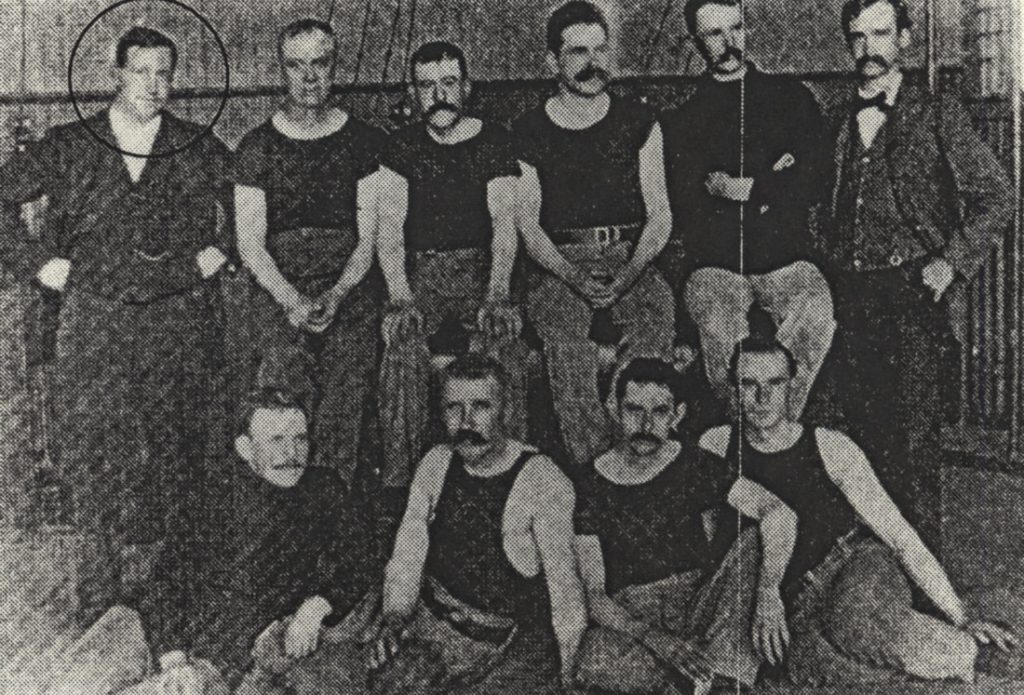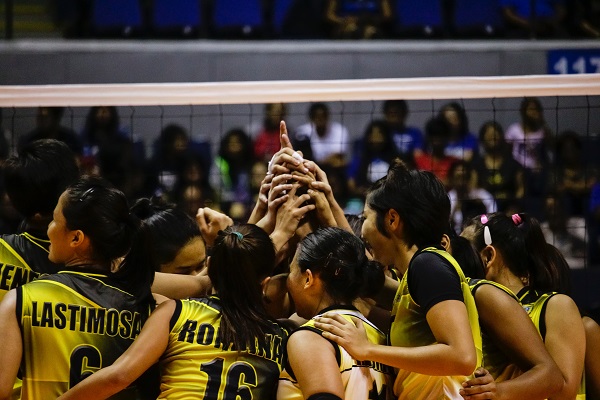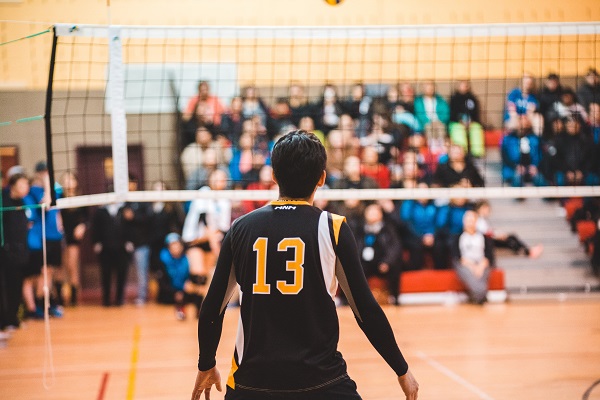History Of Volleyball Game
Volleyball essentially is the ball variation of the basic net games – tennis and badminton – except there is no racquet used – it’s played with one’s hands.
- Volleyball essentially is the ball variation of the basic net games – tennis and badminton.
- No racquet is used to pass the ball to the other court.
- The players use their hands to get the ball across the net
Nice to know…
Volleyball was the result of one man’s search for a gentle yet athletic game. The man is now known as the founder of volleyball and his name is William G. Morgan.
Here’s more about Volleyball
Volleyball is a two-team sport that is played by passing, or more accurately, by hitting a ball across a net with bare hands. The sole objective of the game is to make the ball touch down in the opponent’s court.
If one team misses passing the ball to the court of the opposing team, the opposing team gains a point.

The game has three popular variants: indoor volleyball, beach volleyball, and sitting volleyball.
While indoor volleyball is played on a hard court, beach volleyball is played on sandy ground.

Sitting volleyball, on the other hand, is played while sitting (as the name suggests). It is volleyball for athletes with a disability and it emerged as a rehabilitation sport for injured soldiers.
It requires mostly upper body movement, while the lower body remains stationary, in a sitting position. A player has to keep one of their buttocks in contact with the floor during the entire game.

The Dutch government came up with this idea in 1956 and it has been a regular at the Paralympics Games since 1980 (2004 for women).
How was Volleyball invented?
Here’s how the game came to be.
In the 1890s, an American named William Morgan started to think of an indoor game that was a lot less rough than basketball, but still required a bit of athletic effort – and that’s how the game was born. This is the history of volleyball in a nutshell.

Morgan was in search of a better-suited game for older members of a Christian lay organisation, Young Men’s Christian Association (YMCA) where he was a physical education director. Therefore he created a game called Mintonette (an older name of volleyball) – a fast-paced, indulging game that eliminated the need for a well-built, tall body frame. The game was less strenuous, and hence a good fit for those with weak bodies.
Mintonette is now known as the predecessor of volleyball – it’s inspired by badminton. Not just badminton though, since Morgan was looking for a milder substitute for basketball, he took notes from the popular games of his century such as baseball, tennis, and handball, to name a few.
About the founder of Volleyball
William George Morgan was born in New York, United States, and did his schooling at International YMCA Training School (now called Springfield College). While studying there, he met with the inventor of basketball James Naismith in 1892, and inspired by his good old buddy, Morgan pursued a career in Physical education and went on to create “Mintonette”, a milder alternative for old members of Young Men’s Christian Association (YMCA).

Image Credit: volleyhall.org
Fun fact- Springfield college is the birth ground of basketball.
The present form of the game
Volleyball has been a regular part of the Summer Olympics program for both men and women since 1964. It is played on specially created grounds of uniform dimensions.
A volleyball court is 9 × 18 meters, divided into equal square halves by a net hanging on two vertical poles. An “attack line” parallel to the net is drawn 3 meters from it. This “3 meter” (or “10-foot”) line divides the court into the back and front courts.
A volleyball team consists of 6 players, each standing in a designated role. Here’s a brief look at the player positions
- Hitters- The two hitters are stationed left and right, called the outside hitter and the opposite hitter respectively. They attack and defend their respective positions on the court.
- Setter– The setter sets the ball for a spiker(or the hitters, stationed right and left) to slam down in the opponent’s court. The setter hits the ball high enough so that the spiker/hitter can score a point through a slam-down.
- Middle blockers-Taller players such as blockers are stationed in the middle for best defence.
- Libero- They are defence and receive specialists who keep subbing in for the players from the backcourt.
- Defensive specialist – These players are stationed in the backcourt and much like a libero acts in defence capacity. They jump and slide across the floor to keep the ball moving
- Serving specialist- these players just sub in for a ball serve.
How to play Volleyball
The basic actions of volleyball include serving and receiving. The rest of the other attacks and defence methods are just consequences of these two basic acts of the game.
The crux of the game is to keep the ball moving in the air, and the team that fails at it and lets the ball touch the floor loses points.
Naturally, the team serving the ball is said to be on offence and their opponents stand in the defence position. That was how to play volleyball, some exceptional rules are discussed below.
Interesting rules
- A ball can only be touched three times by the team members before being sent over to the opponent side.
- The blockers can jump above the net and even land their hands on the opponent’s plane to block an attack.
- An indoor volleyball match is won by the best of five games, which means that the winning team should have scored more in at least three or more games.
- To win a game, a team must score 25 points with at least a two-point difference, or otherwise it can go onto a deciding match of 15 points.
- Even in the 15-point deciding match, the victory must be ensured by a two-point difference, which means the acceptable score is either 25-23 or 15-13.
For Beach Volleyball

Beach volleyball is another loved variant of the game so much so that the International federation of volleyball recognised it as a separate sport. Unlike indoor volleyball, beach volleyball is played in teams of two. The match is played to 21 points and victory is ensured on the best of three rules. Beach volleyball is played on similar principles but on the sand and the aim is to not let the ball touch the ground.
Here’s how to play beach volleyball
Beach Volleyball rules
- A ball can only be touched two times by a player before passing it over the court.
- A player’s body must not touch the net
- One player can only make one attempt to hit the ball, multiple hits are off-limits.
- The ball must not come to rest during a play.
- Both indoor and beach volleyball work on a rally point system which means that each game starts with a serve and ends on a team point.
Hope you understand how to play volleyball now. Next, we’ll be divulging into the history of volleyball where we’ll look at the following pointers.
- A short history of Volleyball
- How did the sport get its modern name
- 10 Facts About Volleyball
Unveiling the Short History of Volleyball
Let’s quickly recap the developments so far- In 1895, William Morgan created a game called Mintonette for older people of the organisation he was working for named, the Young Men’s Christian Association (YMCA). A sport that was created for older people in the 1800s is now estimated to be played by over 800 million globally.
The name Mintonette was changed to Volleyball after an observer, Alfred Halstead, noticed the volleying nature of the game. The ball is essentially involved in a volley between the two teams, a sort of passing-the-parcel without dropping it.
The first-ever rules of the game were written by the founder himself and mandated the use of a 1.98 meters high net and a 25 feet × 50 feet court.
His rulebook allowed any number of players on each side, a rule that was later changed to allow only 6 players per team. Notably, he didn’t keep a contact limit for the ball before sending it into the opponent’s court( it is now 3 touches per pass). Although the game did not have fully furnished rules back then, it caught on throughout America, mostly due to YMCA’s the well-connected networks.
Refinements and later developments
The first country to adopt volleyball outside the USA was Canada in 1900. The game soon became an Asian favorite too, and by 1913, it was included in the first Far-Eastern Games (the precursor to Asian games).
As the history of volleyball continued on its course, newer rules were added and discarded. The total points reached 21 from 25 and then were confined to 15. The ball also underwent some changes – the introduction of a lighter ball led to the development of far-specialized techniques like spiking and setting.
These techniques were born in the Philippines under the names ‘bomba’ or ‘Filipino bomb’. But it was all until 1947 before the first internal body for volleyball was created and thus the short history of volleyball embarked on a new long journey.
Establishment of an International body for Volleyball

An international federation, the Fédération Internationale de Volleyball (FIVB), was founded in 1947. On that day, representatives from 14 nations met in Paris to set up the association that would govern volleyball at the international level. This meeting took place under the leadership of France’s Paul Libaud, who later assumed the role of FIVB’s first president and remained on it till 1984.
The FIVB worked to make a uniform set of rules and popularised the game. They hosted some grand events, such as the FIVB grand championships, FIVB World League, and the FIVB World Cup. The first volleyball World Championships was held in 1949 for Men and in 1952 for women.
The organisation also endorsed Beach volleyball, a variation of the game played on sand and with only two players per team. With an international body watching over the game, it was only a matter of time before volleyball entered the Olympics.
This is, of course, not the full story, but only a short history of volleyball.
Volleyball debut at the Olympics
The pinnacle in the history of volleyball was achieved in 1957 when indoor volleyball was granted Olympic status by the International Olympic Committee (IOC). Volleyball made its Olympic debut at the Tokyo 1964 Games.
Fun fact- Brazil, the erstwhile Soviet Union, and Italy have each bagged six gold medals in men’s Olympic volleyball, the highest by any country so far.
Sitting Volleyball is a prominent sport at the Paralympics, and is now managed by the World Organisation for Disabled
Facts about Volleyball

1. Volleyball has been a part of the official program of the Summer Olympic Games since 1964.
The first official volleyball event in the Olympics was played in Tokyo. Beach volleyball was introduced later in Atlanta in 1996.
2. The fastest serve ever in sports history was made in a volleyball match
Volleyball holds the Guinness world record for the fastest serve in sports at 132 kilometres per hour. It was made by a Bulgarian volleyball player Matey Kaziyski during the Italian Cup. Just for the record, the average speed of a volleyball serve is 60 kilometres per hour.
3. FIVB regulations call for leather or synthetic leather volleyball, no heavier than 260–280 grams
4. Buddhist monks are prohibited to play ludo or hopscotch but they can enjoy volleyball.
5. The longest volleyball marathon lasted 85 hours, with 63 matches played in total.
6 The sitting volleyball is an adapted version of volleyball for the Summer Paralympic Games
7. A pepper in volleyball is a hitting drill done without using a net.
8. Volleyball was invented in Holyoke, Massachusetts in the USA and that is why the volleyball hall of fame is also erected there.
9. Volleyball is considered the second most popular sport around the world, after soccer
10. Naturists or nudists were early adopters of the game. By the 1960s, a volleyball court had become standard in almost all nudist/naturist clubs. Naturism is an ethical philosophy that allows people to enjoy the benefits of nature without clothes.
Would you like to know some popular Volleyball moves?

A volleyball match is highly intense and gripping but to enjoy it to the fullest, spectators ought to have some idea about the moves too. Here’s a summary.
Pass: This is a move where a player receives the ball from the server and passes it to the playmaker or the setter. This is usually done with a minimal underhand bump to the ball.
Set: Setting is a part of the play where a setter prepares the ball for the hitter to shoot and score a point for their team. This includes placing or throwing the ball toat an adequate height or pitching it upwards at an angle for an attacker to shoot and score a point.
Spike: This is one of the most loved moves in the game. A spike is generally when a player runs, jumps up, and smashes the ball over the net. It is difficult to defend against a properly done smash.
Block: A block is a defensive move. In this move, a maximum of three players on the other team come close to the net and jump to send a spike or incoming ball back to the opponent’s court or to slow it down for their own team.
Dig: Digging is bumping up a falling ball. Basically, when the ball is heading towards the floor after an attack, a back row runs or dives forward to hit the ball back up for other players to continue the play.
Did you know about these features of volleyball?
I Kid You Not now has a large readership across India and also parts of the world. If you want to write for us, you can submit your story here. You can also apply to become a news anchor. Apply here
Better Your Child’s G.K. In 3 Minutes – Get This Free Newsletter
Get fun facts, simple and easy news, quizzes, and lots of other interesting things to read in your mailbox – for free! It’s what we call GK-on-the-go!
Sign up for our free newsletter here




Comments